Table of contents
- Portrait of Fritz Walter Egli A look into the past
- Chassis of the well-known English tuners hopelessly superior
- Oval tubes with a significantly larger cross-section
- From 1970 Egli-Hondas caused a sensation
- Now 77 years old
- “I love endurance racing”
- In the mid-80s, the first engines with downdraft intake ducts
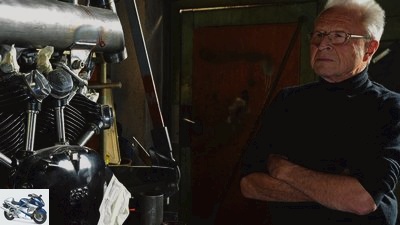
Sdun
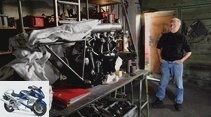
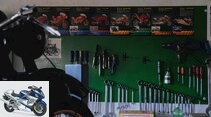
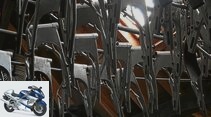
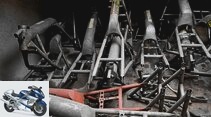
25th pictures
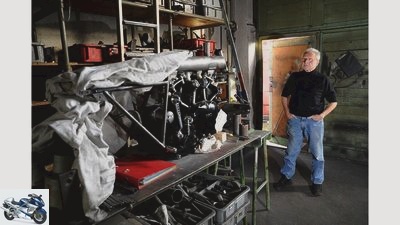
Siemer.
1/25
In focus: Fritz W. Egli.
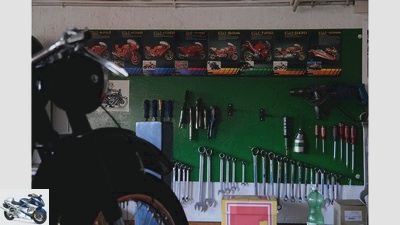
Siemer.
2/25
In focus: Fritz W. Egli.
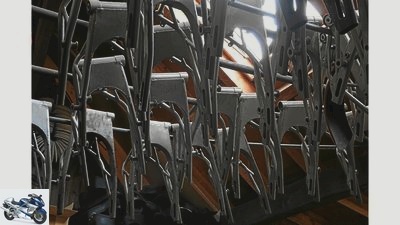
Siemer.
3/25
In focus: Fritz W. Egli.
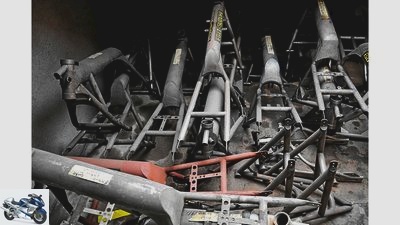
Siemer.
4/25
Thickly greased, the nickel-plated frames defy the dust. If necessary, they can be polished up in no time at all.
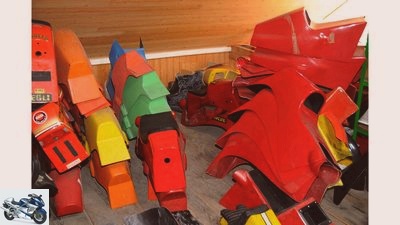
Siemer.
5/25
In focus: Fritz W. Egli.
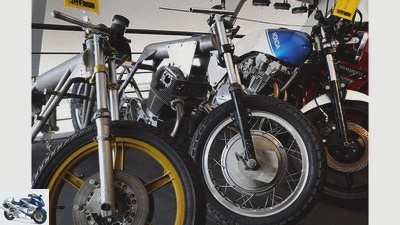
Siemer.
6/25
In focus: Fritz W. Egli.
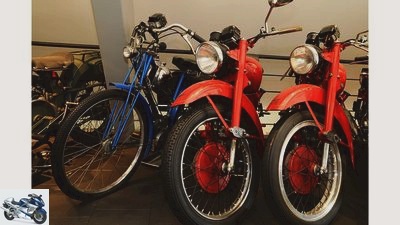
Siemer.
7/25
In focus: Fritz W. Egli.
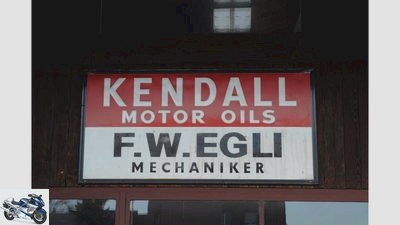
Siemer.
8/25
In focus: Fritz W. Egli.

Siemer.
9/25
Mechanic Dario Betschart during the test assembly of the Red Baron. Your frame is nickel-plated before final assembly.
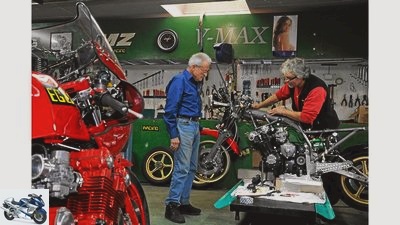
Siemer.
10/25
Egli still builds its own motorcycles. Some Red Baron with a Honda six-cylinder are currently being built.
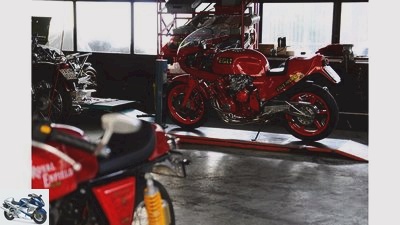
Siemer.
11/25
In focus: Fritz W. Egli.
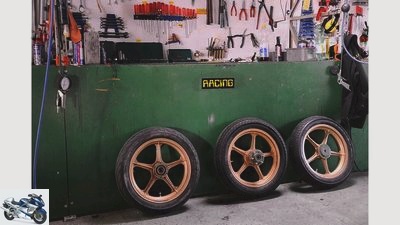
Siemer.
12/25
In focus: Fritz W. Egli.
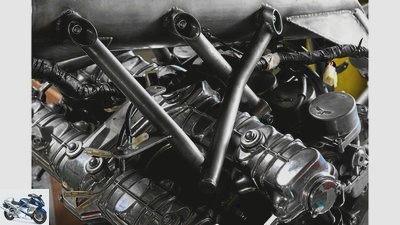
Siemer.
13/25
In focus: Fritz W. Egli.
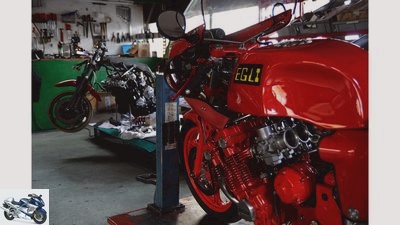
Siemer.
14/25
In focus: Fritz W. Egli.

Siemer.
15/25
In focus: Fritz W. Egli.
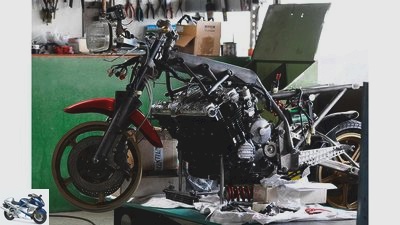
Siemer.
16/25
In focus: Fritz W. Egli.

Siemer.
17/25
Because Fritz Egli loves all engines, he also built frames for all of them. Here the one for the 500cc Yamaha single.
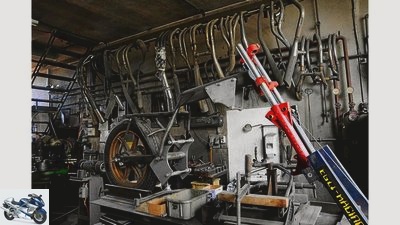
Siemer.
18/25
Happy who has a documented frame number. He’s getting a new Egli-Laverda.
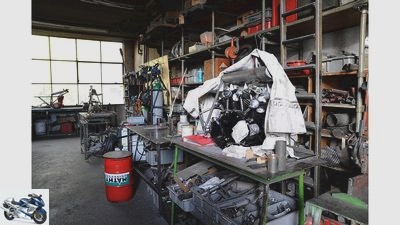
Siemer.
19/25
In focus: Fritz W. Egli.
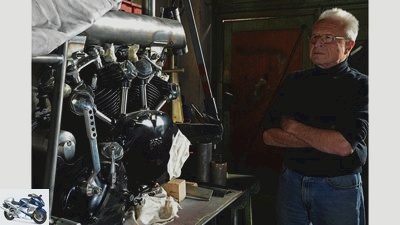
Siemer.
20/25
In focus: Fritz W. Egli.
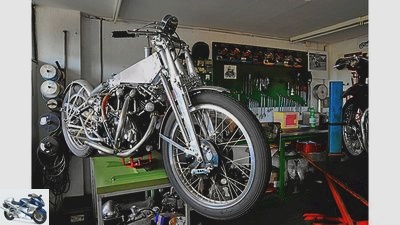
Siemer.
21/25
Egli really appreciates what Vincent created 70 years ago. And that’s why he’s building a Black Shadow. original.
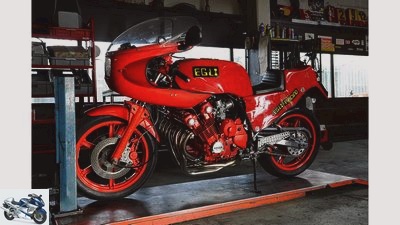
Siemer.
22/25
In focus: Fritz W. Egli.
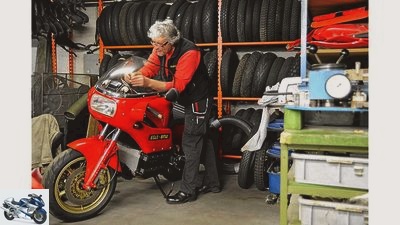
Siemer.
23/25
Workshop manager Jurg Lindemann shows the last of ten and recently sold Egli-BMW K 100s.
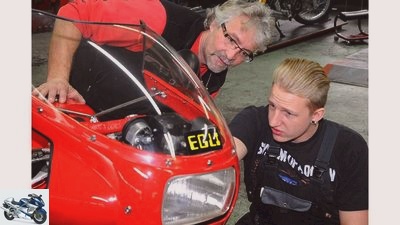
Siemer.
24/25
In focus: Fritz W. Egli.
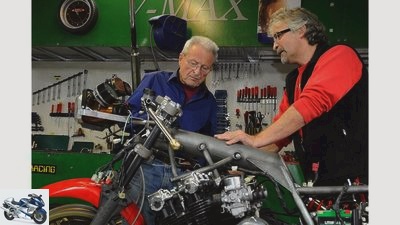
Siemer.
25/25
In focus: Fritz W. Egli.
Sports & scene
Portrait of Fritz Walter Egli
Portrait of Fritz Walter Egli
A look into the past
Content of
Not much more than a ten centimeter thick tube made of precision steel above the engine, the steering head on the front and two struts to the swing arm axis at the rear. Fritz Walter Egli became world famous with such a simple and effective frame construction. Quite rightly.
Fred Siemer
05.12.2014
The motorcycle scene describes it as a miracle, its builder rather as the result of technical analysis and careful construction: the Egli central tube frame. Invented in 1967, the awareness of wider circles after they had heard and read about the inadequacies of Japanese cane braids, and perhaps even had to gain their own experience.
Buy complete article
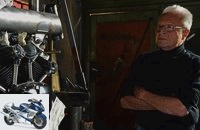
Portrait of Fritz Walter Egli
A look into the past
6 pages) as PDF
€ 2.00
Buy now
As if on rails, a Honda engine at the beginning of the 70s only ran in the Egli framework. The same happened to other engines, starting with that of the 1000 Vincent, which the young Fritz wanted to prepare for victory. “I had brought a bastard of Rapide and Black Shadow engine parts to the level of the production racer Black Lightning,” he says.
Chassis of the well-known English tuners hopelessly superior
Moved with almost 70 hp Egli by far the most powerful motorcycle in the Open Class of the Swiss championship. “I had good chances on the few circuits that we rode. But most of the time we met for hill climbs, and the road surfaces were often terrible. With grooves and heels and potholes. The chassis of the well-known English tuners were hopelessly superior. “
From an early age Fritz was interested in mechanics in general and motorcycles in particular, which soon developed not only a technical, but also an analytical talent. “I didn’t have to be an engineer to know my Vincent’s weaknesses. The steering head and swing arm mounting should be connected as directly and torsion-free as possible. Period. ”This is how the 100 tube came into play and the struts to the axle mounts, which are only subjected to tension and compression. “The second major source of unrest back then was the swing arm. Most were made of thin tubes, 25 millimeters or an inch in diameter, ”Egli recalls.
Oval tubes with a significantly larger cross-section
“They twisted when the struts worked a little differently.” So he went about the matter fundamentally and used oval tubes with a significantly larger cross-section. “I don’t want to rule out that there has been a similar construction before,” says Egli, modestly. “But I wasn’t aware of any at the time. It is only logical. ”It is also logical to let the rocker rotate in good tapered roller bearings. Except for the steering head, for which he also switched from ball to tapered roller bearings after a while, Egli never had to change anything in his frame.
Although he couldn’t afford a stand, he presented his motorcycle at the ZuSPA trade fair in Zurich in 1967. “I just pushed it in there. That was piracy ”, he smiles with satisfaction,“ but I think it was justified: Everyone wanted to see this motorcycle. ”Except MOTORRAD, because in the ZuSPA report by then editor-in-chief Siegfried Rauch the Egli-Vincent does not appear at all. “That was what it was all about a year later.” Now Egli has to laugh: “I only knew him by name and thought he’d come from the road traffic office or something because he wanted to know everything. Steering head angle, caster, wall thickness of the pipes … “However, his best advertising was not the trade fair, but the sports appearances. After he had become Swiss champion himself, his drivers Fritz Peier and Florian Burki ensured spectacular successes, especially in England, and triggered a real run on Egli chassis.
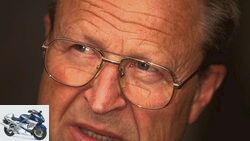
Sports & scene
What actually drives: Fritz W. Egli
20 questions to Fritz W. Egli
read more
From 1970 Egli-Hondas caused a sensation
Then the Japanese came, and Fritz Egli fondly remembers that. “Right from the start, I had the greatest respect for the Japanese engineers. We lived with these singles and twins from England until the 1960s. They were beautiful, of course, but they weren’t durable. ”The Honda CB 450 is different, and Egli still raves about its tuning potential. “And first of all the CB 750, it was simply gigantic. The engine, so neatly designed. So durable. You only got it broken with a hammer. ”Quite soberly, however, he adds how little their torsion-friendly chassis are suitable for sports use and that he had something much better in store: from 1970 Egli-Hondas caused a sensation. Enthusiasm and analysis – Eglis’ motorcycle passion oscillates back and forth between these cornerstones. What doesn’t excite him he has to improve, and to improve it he has to analyze it.
Only the last 20 years have brought to light that the enthusiasm of the fast precision mechanic is already well below 100 hp. As an MZ importer, Egli and his team built super-fast supermotos and breathed over 80 hp into the phlegmatic drive of the Sachsen-Krader, the 660 five-valve single from Yamaha. As a Royal Enfield importer, on the other hand, he initially focused on raising the standard of the Indian single cylinder to an acceptable level. Only then did the time come for sporty approaches, for 535 and even over 600 cm³, for 30 and more hp, for other spring elements and also for the central tube – and all of this significantly pushed the development of the Continental GT series model.
Now 77 years old
As a collector, Egli doesn’t even need ten horsepower from a 150cc Gilera or a 250cc Guzzi Airone. Cherished souvenirs from his beloved holiday destination, passionately built luxury goods, and yet the analyst cannot help but equip them with Krober tachometers. At the moment he prefers to drive a Vincent team through the canton of Aargau. A tricycle with a Hatz diesel has also been the favorite, and anyone who asks him about his favorite motorcycles receives an amusing lecture about his beloved bicycle with an auxiliary motor. “That was a small thing, but it was a great freedom for a 15-year-old.”
Fritz Egli is now 77 years old, and slowly he stops just looking ahead. How else would you explain that he is building a Vincent Black Shadow? Not with a central tube, but with the original frame. On the other hand, Fritz Egli is only 77 and doesn’t even think about looking back: five years ago he broke the speed record for teams on the salt lake near Bonneville with a Suzuki Hayabusa conversion. 332 km / h. Now he wants to install traction control so that maybe even more can be done.
“I love endurance racing”
Crazy things. They are part of the company history at Egli – the MRD 1 from 1981, the world record motorcycle disguised by Luigi Colani from 1987. It actually started when the small pre-alpine manufacturer wanted to compete in sport with the factory teams, 1973, at the Bol d’Or. “I love long-distance races,” Egli enthuses even today, “because every part of a motorcycle really has to prove itself extremely.” Honda has dominated these competitions since 1969, and Egli also initially tuned a CB 750 engine. It didn’t get far.
The following year he raced the Kawasaki 1000, and Godier / Genoud won. They did that often afterwards, and as a result, Egli built more frames than ever – mostly for Honda and Kawa engines. “Actually not true,” he corrects, “we had it built back then. First with a Swiss, then with a southern German manufacturer of steel furniture. That worked very well. ”At first the frames were brazed, later welded. For the customer, according to Egli, it doesn’t matter. Some of them only bought the pipe mill at the time. Some bought motorcycles that were finished, but individually built according to their specifications. Many bought a kit with a frame and wheels and fairing, tank, and seat humps and suspension elements.
In the mid-80s, the first engines with downdraft intake ducts
As early as 1973, Fritz Egli had cast electron wheels on offer for the Egli Honda with a CB 750 engine, first in Switzerland, then at Mahle and finally at Campagnolo. Less unsprung masses, of course, lower gyroscopic forces. The forks soon revealed real weaknesses in the face of increasing engine performance. A thicker wheel axle did not fit into the usual wheel hubs. “So we developed a fork with a double tube stabilizer over the mudguard,” Egli reports calmly. “Nothing could get twisted at first.” Everything so logical, so clear. Why didn’t the others think of it? “You have to ask the others.” But some of the others also asked him. Even Ducati was not too bad to officially order frames for test purposes. And the cast wheels at the same time.
In return – and as payment – Fritz Egli received a couple of fast engines, and that’s how the first Egli Ducati came into being. The Japanese proceeded more discreetly, but they too carefully studied the Bettwiler stable structure. By the mid-80s they had the hang of it. That was when it became tight for Europe’s chassis forges. And at the same time came the first engines with downdraft intake ducts. They have the carburettors where Fritz Egli laid his central pipe. He only pondered this very briefly. “I can’t take care of everything, can I?”
Related articles
-
Portrait: two-wheeler dealer Fritz Roth
Winni washer Sports & scene Portrait: two-wheeler dealer Fritz Roth scene Portrait of Fritz Roth Content of Fritz Roth has dedicated himself to the…
-
What actually drives: Fritz W. Egli
archive Sports & scene What actually drives: Fritz W. Egli What actually drives: Fritz W. Egli 20 questions to Fritz W. Egli “I am lying in the hospital…
-
Fred Siemer 16 pictures Fred Siemer 1/16 Norbert Schuller knows the sensitive Konig four-cylinder like no other. Fred Siemer 2/16 Every handle has been…
-
The Marathon Harley: “The Motorcycle” – Brief portrait of Peter and Kay Forwood
Forwood to travel The Marathon Harley: &# 34; The Motorcycle&# 34; – Brief portrait of Peter and Kay Forwood The Marathon Harley “The motorcycle” – Brief…
-
Gigi Soldano 10 pictures Alan Cathcart 1/10 As head of Cagiva, Claudio Castiglioni was the first to swap office chairs for racing suits in order to drive…
-
Holger Aue Motomania comic artist portrait
archive Sports & scene Holger Aue Motomania comic artist portrait Portrait of comic artist Holger Aue The Motomania man His page is far back in MOTORRAD,…
-
Mick Doohan and Casey Stoner in portrait
2snap Sports & scene Mick Doohan and Casey Stoner in portrait Portrait: Comparison Mick Doohan / Casey Stoner The MotoGP riders from Australia Content of…
-
Lohse, factory 14th pictures Lohse 1/14 It takes 75 days for a new Arai helmet to end up in the box from the gluing of the first glass fibers to the…
-
Gori counselor technology & future Portrait: Lino Dainese Interview: Lino Dainese “I want to measure the adrenaline” Who invented it? No, for once not…
-
Portrait of designer Uwe Schneider
Siemer 27 pictures Siemer 1/27 Siemer 2/27 Siemer 3/27 Siemer 4/27 Siemer 5/27 The engine and transmission were specifically and very successfully…
Hi
Can i kindly ask you to tell who made / produced the wheels on page 11 / 25.
I have similar wheels witch i will use for a new project ( TR 750 )
Thanks Preben